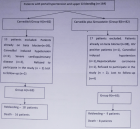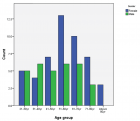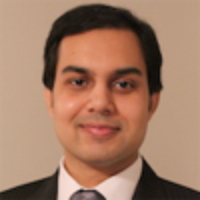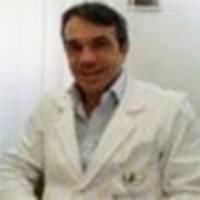Abstract
Research Article
Conservation Threats to Ethnomedicinal plants in Kore District, South Eastern, Ethiopia
Selamawit Nega*, Agete Jerena and Mesfin Boja
Published: 04 August, 2023 | Volume 7 - Issue 2 | Pages: 069-075
The study aimed to investigate the threats to the biodiversity of ethnomedicinal plants and to find consensus information on conservation and management practices of ethnomedicinal plants to contribute sustainable utilization of ethnomedicinal plants in Kore district, Southeastern Ethiopia. The result of the survey revealed that sixty-one medicinal plants were reported by the informants from the study area. These plants are distributed in 59 genera and 37 families. Family Lamiaceae and Asteraceae were represented by 5 (8.2%) species for each family and this is the highest number of species and followed by 4 (6.5%) species of Solanaceae and Fabaceae for each family. Preference ranking analysis shows that Eucalyptus globulus scored 47, indicating that it is the most used plant for firewood in the community, followed by Olea europaea (45) and the least used plant for firewood is Juniperus procera scored 36. Paired comparison analysis showed that Olea Europeae ranked first followed by Podocarpus falcatus for the use of charcoal production in the study area. The major purposes of plant species in the study area were construction, Charcoal, Firewood, Furniture, and Fences as well as for medicinal uses. Based on direct matrix ranking analysis Juniperus procera, Eucalyptus globulus, Podocarpus falactus, Olea europaea, Hagenia abyssinica, Croton macrostachyus, and Cordia africana were the most preferred medicinal plants by local people in the study area. The analysis's findings indicated that anthropogenic influences are endangering medicinal plants. In this study area, only about 13% of medicinal plants are collected from home gardens. This shows that the effort made by the community to conserve medicinal plants is not satisfactory. Therefore, encouraging NGOs and Government offices to participate in the conservation of medicinal plants to encourage the local people to plant indigenous trees for domestic use is necessary.
Read Full Article HTML DOI: 10.29328/journal.jpsp.1001108 Cite this Article Read Full Article PDF
Keywords:
Threats; Conservation; Ethnomedicinal plants
References
- Rasool A, Bhat KM, Sheikh AA, Jan A, Hassan S. Medicinal plants: Role, distribution, and future. Journal of Pharmacognosy and Phytochemistry. 2020;9(2): 2111-2114.
- Raghuvanshi D, Dhalaria R, Sharma A, Kumar D, Kumar H, Valis M, Kuča K, Verma R, Puri S. Ethnomedicinal Plants Traditionally Used for the Treatment of Jaundice (Icterus) in Himachal Pradesh in Western Himalaya-A Review. Plants (Basel). 2021 Jan 25;10(2):232. doi: 10.3390/plants10020232. PMID: 33504029; PMCID: PMC7910824.
- Sen S, Chakraborty R, De B, Devanna N. An ethnobotanical survey of medicinal plants used by ethnic people in the West and South districts of Tripura, India. Journal of Forestry Research. 2011;22: 417-426.
- Salmerón-Manzano E, Garrido-Cardenas JA, Manzano-Agugliaro F. Worldwide Research Trends on Medicinal Plants. Int J Environ Res Public Health. 2020 May 12;17(10):3376. doi: 10.3390/ijerph17103376. PMID: 32408690; PMCID: PMC7277765.
- Ratha KK, Sruajani MS, Arya JC, Joshi GC. Impact of climate change on diversity of himalayan medicinal plant: a threat to ayurvedic system of medicine. International Journal of Research in Ayurveda & Pharmacy. 2012;3(3).
- Ucchali complex (Khushab): (1994) A report on the planning the conservation of the water bodies based on the indigenous population.
- Ahmad I, Hussain M, Rehman A, Mustafa I, Farooq M, Jabeen S, Zafer S. Threats to medicinal plant diversity in Soon Valley (Salt range) of Punjab, Pakistan. Int Res. 2012;1: 169-58.
- Demisse A. Biodiversity conservation of medicinal plants: problems and prospects. In Conservation and sustainable use of medicinal plants in Ethiopia. Proceedings of the national workshop on biodiversity conservation and sustainable use of medicinal plants in Ethiopia. Addis Ababa: IBCR. 2001; 56-64.
- Woldeab B, Regassa R, Alemu T, Megersa M. Medicinal Plants Used for Treatment of Diarrhoeal Related Diseases in Ethiopia. Evid Based Complement Alternat Med. 2018 Mar 18;2018:4630371. doi: 10.1155/2018/4630371. PMID: 29743923; PMCID: PMC5878875.
- Kore district agricultural office. (2016). Kore district south eastern Ethiopia. (Unpublished).
- Martin GJ. Ethnobotany, conservation, and community development. In Ethnobotany: a methods manualBoston, MA: Springer US. 1995; 223-251.
- Cotton CM. Ethnobotany: principles and applications. John Wiley & Sons. 1996.
- Yamane T. ‘Sampling distribution. 1967.
- Kumar K. Conducting Key Informant Interviews in Developing Countries: Agency for International Development. Washington, DC. 1989.
- Patton Q. Qualitative evaluation and research methods, 2nd ed, Sage, Newbury Park, CA. 1990.
- Regassa R. Useful plant species diversity in home gardens and its contribution to household food security in Hawassa city, Ethiopia. African Journal of Plant Science. 2016;10(10): 211-233.
- Girma Z, Abdela G, Awas T. Ethnobotanical study of medicinal plant species in Nensebo District, south-eastern Ethiopia. Ethnobotany Research and Applications. 2022; 24: 1-25.
- Shure HA, Talila H, Mohammed U, Jilo SA. Ethnobotanical study of medicinal plants and their Economic importance in Dalomana district, Southeastern Oromia, Ethiopia. 2022.
- Götmark F, Götmark E, Jensen AM. Why Be a Shrub? A Basic Model and Hypotheses for the Adaptive Values of a Common Growth Form. Front Plant Sci. 2016 Jul 26;7:1095. doi: 10.3389/fpls.2016.01095. PMID: 27507981; PMCID: PMC4961008.
- Tolossa T. Traditional medicinal plants used to treat human disease in and around Ambo town, western Ethiopia: An ethnobotanical study.
- Belay H, Bekele T. Modeling Growth Performance of Juniperus procera (Hochst. Ex. Endl.) Plantations at Boter-Becho Site, Jimma Zone, Southwest Ethiopia. International Journal of Environmental Sciences & Natural Resources. 2018;13(5): 134-137.
- L Lulekal E, Asfaw Z, Kelbessa E, Van Damme P. Ethnomedicinal study of plants used for human ailments in Ankober District, North Shewa Zone, Amhara Region, Ethiopia. J Ethnobiol Ethnomed. 2013 Aug 28;9(1):63. doi: 10.1186/1746-4269-9-63. PMID: 23984919; PMCID: PMC3846447.
- Megersa M, Asfaw Z, Kelbessa E, Beyene A, Woldeab B. An ethnobotanical study of medicinal plants in Wayu Tuka District, East Welega Zone of Oromia Regional State, West Ethiopia. J Ethnobiol Ethnomed. 2013 Sep 25;9(1):68. doi: 10.1186/1746-4269-9-68. PMID: 24295044; PMCID: PMC3851437.
- Agisho H, Osie M, Lambore T. Traditional medicinal plants utilization, management, and threats in Hadiya Zone, Ethiopia. Journal of Medicinal Plants. 2014;2(2): 94-108.
- Rawat US, Agarwal NK. Biodiversity: Concept, threats, and conservation. Environment Conservation Journal. 2015;16(3): 19-28.
- Hodgkin T. Home gardens and the maintenance of genetic diversity. Home gardens and in situ conservation of plant genetic resources in farming systems. Proceedings of the Second International Home Gardens Workshop, Witzenhausen, Federal Republic of Germany. International Plant Genetic Resources Institute (IPGRI). 2022; 14-18.
- Semu AA. The study of home garden agrobiodiversity, practices of home gardening, and its role in In-Situ conservation of plant biodiversity in Eastern Hararghe, Kombolcha Town Oromia Regional State Ethiopia. Open Journal of Forestry. 2018;8(02): 229.
- Andarge E, Shonga A, Agize M, Tora A. Utilization and conservation of medicinal plants and their associated indigenous knowledge (IK) in Dawuro Zone: an ethnobotanical approach. Int J Medicinal Plant Res. 2015;4: 330-7.
- Bhattacharjee T, Sen S, Chakraborty R, Maurya PK, Chattopadhyay A. Cultivation of medicinal plants: Special reference to important medicinal plants of India. Herbal medicine in India: Indigenous knowledge, practice, innovation and its value. 2020; 101-115.
- Van Wyk AS, Prinsloo G. Medicinal plant harvesting, sustainability, and cultivation in South Africa. Biological Conservation. 2018; 227: 335-342.
- Central Statistical Agency (CSA) Federal Democratic Republic of Ethiopia; Addis Ababa. 2007.
- Cunningham AB. People, park, and plant use: recommendations for multiple-use zones and development alternatives around Bwindi Impenetrable National Park, Uganda. People, park, and plant use: Recommendations for multiple-use zones and development alternatives around Bwindi Impenetrable National Park, Uganda.
- Kore district Land and Environment conservation office (2019). Kore district south eastern Ethiopia. (Unpublished).
- Wood A, Stedman-Edwards P, Mang J. The root causes of biodiversity loss. Routledge. 2013.
- 35. Birhanu Tadesse and Dereje Abera. (2015). Survey of ethno-veterinary medicinal plants at selected Horro Gudurru Districts, Western Ethiopia. African Journal of Plant Science, 9(3), 185-192.
Figures:

Figure 1

Figure 2

Figure 3

Figure 4
Similar Articles
-
Conservation Threats to Ethnomedicinal plants in Kore District, South Eastern, EthiopiaSelamawit Nega*, Agete Jerena, Mesfin Boja. Conservation Threats to Ethnomedicinal plants in Kore District, South Eastern, Ethiopia. . 2023 doi: 10.29328/journal.jpsp.1001108; 7: 069-075
-
Ethno-Medicinal Plants from the North-Central Western Ghats of India for Alternative Health CarePramod J Hurkadale*, Chaitrali M Bidikar. Ethno-Medicinal Plants from the North-Central Western Ghats of India for Alternative Health Care. . 2023 doi: 10.29328/journal.jpsp.1001109; 7: 076-080
-
Potential of Herbarium-based Phenological Studies to Predict the Climate Change ImpactsKailash S Gaira*, OK Belwal, ID Bhatt. Potential of Herbarium-based Phenological Studies to Predict the Climate Change Impacts. . 2024 doi: 10.29328/journal.jpsp.1001141; 8: 110-112
Recently Viewed
-
Environmental Factors Affecting the Concentration of DNA in Blood and Saliva Stains: A ReviewDivya Khorwal*, GK Mathur, Umema Ahmed, SS Daga. Environmental Factors Affecting the Concentration of DNA in Blood and Saliva Stains: A Review. J Forensic Sci Res. 2024: doi: 10.29328/journal.jfsr.1001057; 8: 009-015
-
Markov Chains of Molecular Processes of Biochemical MaterialsOrchidea Maria Lecian*. Markov Chains of Molecular Processes of Biochemical Materials. Int J Phys Res Appl. 2024: doi: 10.29328/journal.ijpra.1001076; 7: 001-005
-
Generation of Curved Spacetime in Quantum FieldSarfraj Khan*. Generation of Curved Spacetime in Quantum Field. Int J Phys Res Appl. 2024: doi: 10.29328/journal.ijpra.1001077; 7: 006-009
-
Optimizing Milk Safety: Applying Nuclear Techniques in X-ray Fluorescence Spectroscopy for Heavy Metal Quantification in Powdered Milk Consumed in SenegalPapa Macoumba Faye*, Djicknack Dione, Oumar Ndiaye, Moussa Hamady SY, Nogaye Ndiaye, Alassane Traore, Ababacar Sadikhe Ndao. Optimizing Milk Safety: Applying Nuclear Techniques in X-ray Fluorescence Spectroscopy for Heavy Metal Quantification in Powdered Milk Consumed in Senegal. Int J Phys Res Appl. 2024: doi: 10.29328/journal.ijpra.1001078; 7: 010-015
-
Thermoelectric Materials Based on Lead Telluride and Prospects for their Practical ApplicationYuriy Pavlovskyy*, Nadiya Pavlovska. Thermoelectric Materials Based on Lead Telluride and Prospects for their Practical Application. Int J Phys Res Appl. 2024: doi: 10.29328/journal.ijpra.1001079; 7: 016-018
Most Viewed
-
Evaluation of Biostimulants Based on Recovered Protein Hydrolysates from Animal By-products as Plant Growth EnhancersH Pérez-Aguilar*, M Lacruz-Asaro, F Arán-Ais. Evaluation of Biostimulants Based on Recovered Protein Hydrolysates from Animal By-products as Plant Growth Enhancers. J Plant Sci Phytopathol. 2023 doi: 10.29328/journal.jpsp.1001104; 7: 042-047
-
Sinonasal Myxoma Extending into the Orbit in a 4-Year Old: A Case PresentationJulian A Purrinos*, Ramzi Younis. Sinonasal Myxoma Extending into the Orbit in a 4-Year Old: A Case Presentation. Arch Case Rep. 2024 doi: 10.29328/journal.acr.1001099; 8: 075-077
-
Feasibility study of magnetic sensing for detecting single-neuron action potentialsDenis Tonini,Kai Wu,Renata Saha,Jian-Ping Wang*. Feasibility study of magnetic sensing for detecting single-neuron action potentials. Ann Biomed Sci Eng. 2022 doi: 10.29328/journal.abse.1001018; 6: 019-029
-
Pediatric Dysgerminoma: Unveiling a Rare Ovarian TumorFaten Limaiem*, Khalil Saffar, Ahmed Halouani. Pediatric Dysgerminoma: Unveiling a Rare Ovarian Tumor. Arch Case Rep. 2024 doi: 10.29328/journal.acr.1001087; 8: 010-013
-
Physical activity can change the physiological and psychological circumstances during COVID-19 pandemic: A narrative reviewKhashayar Maroufi*. Physical activity can change the physiological and psychological circumstances during COVID-19 pandemic: A narrative review. J Sports Med Ther. 2021 doi: 10.29328/journal.jsmt.1001051; 6: 001-007

HSPI: We're glad you're here. Please click "create a new Query" if you are a new visitor to our website and need further information from us.
If you are already a member of our network and need to keep track of any developments regarding a question you have already submitted, click "take me to my Query."


















































































































































